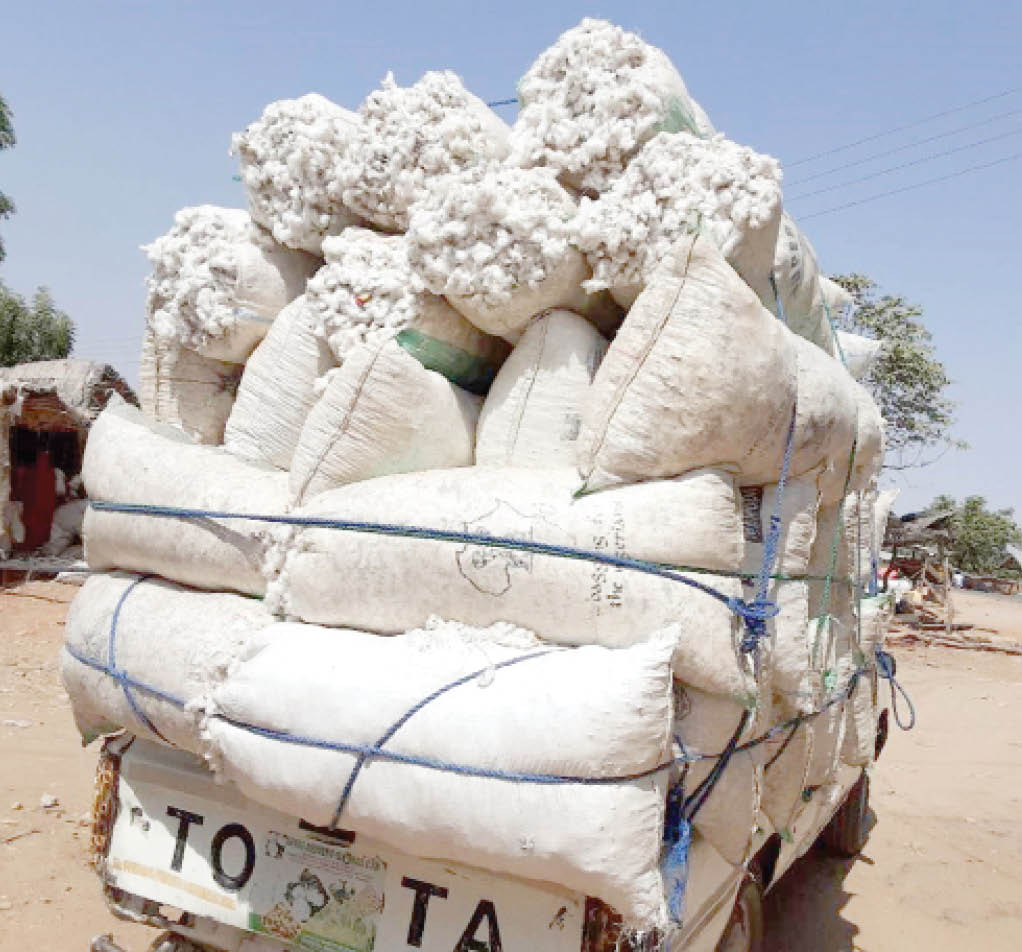Why Nigeria’s cotton production suffers setback – NACOTAN
It is on record that cotton was among the few cash commodities that built the economy of Nigeria. It was a major source of income to the country before the coming of crude oil. However, recent happenings in cotton production sector have seen many cotton farmers change from cotton to other commodities they feel safe […]

a van moving cotton to one of the ginneries in the north
It is on record that cotton was among the few cash commodities that built the economy of Nigeria. It was a major source of income to the country before the coming of crude oil. However, recent happenings in cotton production sector have seen many cotton farmers change from cotton to other commodities they feel safe cultivating.
This development has been attributed to poor cultivation opportunities linked to poor private and public sector intervention, poor access to finance and closure of various ginneries. These factors among others are said to have been threatening the existence of cotton plantation and cotton farmers in the country.
According to some cotton farmers, the country is losing a huge amount of income due to poor cotton production and that has led to unwarranted cotton importation or finished textile goods into the country.
Findings have also revealed that there were over 28 ginneries across the country, but presently less than 10 percent of these ginneries remain functional and thousands of workers have been laid off while cotton farmers have been left to their fate with no reliable buyers, and not much regards is being given to their plight. It was also gathered that the country has been spending a fortune on the importation of a huge supply of finished textile goods at the expense of cotton farmers.
- Cocoa farmers affected by inferno seek improved seedlings, grant
- Addressing the challenge of zero dose children in Nigeria
However, in 2018/2019, the federal government of Nigeria figured out that there was a need to revive cotton production in the country and as such, cotton got listed in the anchor borrower agricultural program in that year. Interestingly, there was a huge increase in cotton cultivation and production that year and the increase was attributed to the intervention introduced by the federal government under the anchor borrower program. Moreover, the program on cotton was said to have recorded the best result in terms of recovery.
According to a cotton farmer in Gwazo Local Government Area of Kano State, Malam Tukur Habibu, cotton production suffered after that year because the intervention stopped, and many cotton farmers opted out of cotton production for other agro-commodities while few others trimmed down their production capacity.
Alhaji Munzali Dayyabu Taura, the National Vice President of National Cotton Association of Nigeria (NACOTAN), says it is unfortunate that cotton has not been produced as expected in recent years due to the poor attention given to the sector by both the public and private sectors.
He revealed that NACOTAN has been engaged in various attempts to revive the sector, including several attempts at expanding production to the dry season. He explained that the association had conducted a baseline survey on the possibilities of expanding cotton production to the dry-season, adding that the result showed that dry-season cotton production is very possible though there is a dire need of the intervention of the various research institutes to support the initiative.
“We have supported some cotton farmers to grow cotton in some places and also we have tried to initiate dry-season cotton production and it will interest you to note that should the research institutes decide to venture into what we have just started, I am 100 percent convinced that the sector will surely bounce back,” he said.
Against the common insinuation that poor pricing was killing cotton production in the country, Malam Taura revealed that pricing wasn’t the reason behind the poor production of cotton because the commodity has a very good market value that appreciates annually.
Another cotton farmer Sama’ila Yaro Rogo stated that there was a strong need for government intervention in cotton production, adding that the rate at which cotton farmers were running away from cotton production was alarming. He explained that what the sector needs isn’t a loan but subsidy that will ensure huge increase in production.
“It is obvious that farmers don’t usually pay loans, but with a well calculated and systematic subsidy introduction, the sector will be revived and governments will no doubt recover their funds 100 percent with no form of default,” he revealed.
